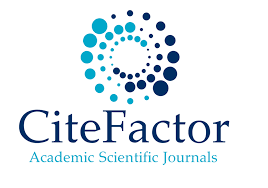ANALISIS ELASTISITAS PERMINTAAN PRODUK TEMPE DI KELURAHAN SENDANG MULYASARI KECAMATAN TONGAUNA KABUPATEN KONAWE
DOI:
https://doi.org/10.36277/geoekonomi.v13i1.174Keywords:
Elastisitas, Permintaan ProdukAbstract
Sendang Mulya Sari merupakanKelurahan penghasil Tempe yang terbesar di Kabupaten konawe, dengan adanya industri tempe rumahan banyak masyarakat yang membuka usaha beraneka ragam menurut usia, pendapatan, dan tingkat pendidikannya.menjual tempe dengan cara berlangganan di Industri tersebut. Dengan masa covid19 hari ini industri ini menjadi salah satu peluang masyarakat kabupaten konawe untuk melangsungkan kehidupannya baik berlangganan langsung ataupun dengan sistem on line. Penelitian ini bertujuan untuk menganalisis Elastisitas Permintaan Produk Tempe di Kelurahan Sendang Mulyasari Kecamatan Tongauna Kabupaten Konawe. Alat analisis yang digunakan dalam penelitian ini adalah metode dekriptif kualitatif yaitu menganalisis data dengan secara induktif.Berdasarkan hasil penelitian, didapatkan bahwa menurut informan bahwa elastisitas permintaan produk tempe di kelurahan sendang mulyasari dikatakan inelastis hal ini karena Ed < 1. Elastisitas PermintaanTempe di Kelurahan Sendang Mulyasari tergolong inelastis yaitu nilai d (permintaan) lebih besar dari 1 (Ed = <1 ). Pada jenis elastisitas ini konsumen kurang peka terhadap perubahan harga. Artinya, meskipun harga naik atau turun, masyarakat akan tetap membelinya. Saran bagi produsen produk tempe hendaknya mempertimbangkan faktor-faktor yang mempengaruhi elastisitas permintaan tempe seperti faktor jenis produk,faktor harga, faktor selera, faktor pendapatan konsumen, faktor ketersediaan produk, dan kualitas produk.
Sendang Mulya Sari is the largest tempe-producing village in Konawe Regency, with a home-based tempe industry, many people open businesses that vary according to age, income, and education level. Selling tempeh by subscribing to the industry. With the Covid-19 period today, this industry has become one of the opportunities for the people of Konawe Regency to carry out their lives, either by direct subscription or by an online system. This study aims to analyze the elasticity of demand for tempe products in Sendang Mulyasari Village, Tongauna District, Konawe Regency. The analytical tool used in this study is a qualitative descriptive method, which analyzes the data inductively. classified as inelastic, namely the value of d (demand) is greater than 1 (Ed = <1 ). In this type of elasticity, consumers are less sensitive to price changes. That is, even if the price goes up or down, people will still buy it. Suggestions for tempe product producers should consider the factors that affect the elasticity of demand for tempe such as product type, price factor, taste factor, consumer income factor, product availability factor, and product quality.
Downloads
References
Astawan M., Wresdiyati T., Widowati S., Bintari S.H., I. N. (2013). Karakteristik Fisikokimia dan Sifat Fungsional Tempe yang di Hasilkan dari Berbagai Varietas Kedelai. Pangan, 22(3), 2013.
Bungin, B. (2003). ANALISIS DATA PENELITIAN KUANTITATIF. Jakarta: Raja Grafindo Persada.
Fair, C. (2007). PRINSIP-PRINSIP EKONOMI (1st ed.). Jakarta: Erlangga.
Firdaus, A. (2009). AKUNTANSI BIAYA (2nd ed.). Salemba Empat.
Istijanto. (2008). Riset Sumber Daya Manusia: Cara Praktis Mendeteksi Dimensi-dimensi Kerja Karyawan. Jakarta: Gramedia Pustaka Utama.
Kotler, P. (2004). MARKETING MANAGEMENT. New Jersey: Prentice Hall.
Kotler, P., & Armstrong, G. (2016). PRINCIPLES of MARKETING (15th ed.). New Jersey: Pearson Prentice Hall.
Kotler, P., & Keller, K. L. (2012). Marketing Management (14th ed.). New Jersey: Prentice Hall.
M. Nur Rianto Al Arif, & Euis Amalia. (2010). Teori Mikroekonomi: Suatu Perbandingan Ekonomi Islam dan Ekonomi Konvensional. Jakarta: Kencana.
Sugiono. (2013). Memahami Penelitian Kualitatif. Bandung: ALFABETA.
Suprayitno E. (2017). Dasar Pengawetan. Malang: UB Press Universitas Brawijaya.
Ulfa, A. (2011). Analisis Faktor-faktor yang Mempengaruhi Permintaan Tempe di Desa Jomban Kecamatan Ciputat, Kota Tanggerang Selatan, Provinsi Banten. Universitas Islam Negeri Jakarta, 2011.
Downloads
Published
How to Cite
Issue
Section
License
You are free to:
Share - copy and redistribute the materials in any medium or format for any purpose, even for commercial purposes.
Adapt - compose, change and develop the material for any purpose, even for commercial purposes.
The licensor cannot revoke these freedoms as long as you follow the license terms.
With the following conditions:
Attribution - you must give appropriate credit, provide a link to the license, and indicate if changes have been made. You may do so in a reasonable manner, but not in any way that suggests that the licensor endorses you or your use.
No additional restrictions - You may not implement legal provisions or technological measures that legally restrict others from doing anything permitted by the license.
Notice:
You do not have to comply with the license for elements of the material that are in the public domain or where your use is permitted by an applicable exclusion or restriction.
No warranties are given. This license may not grant all the permissions necessary for your intended use. For example, other rights such as publicity, privacy, or moral rights may limit how you use the material.







_geoekonomi.png)
_geoekonomi.png)
















